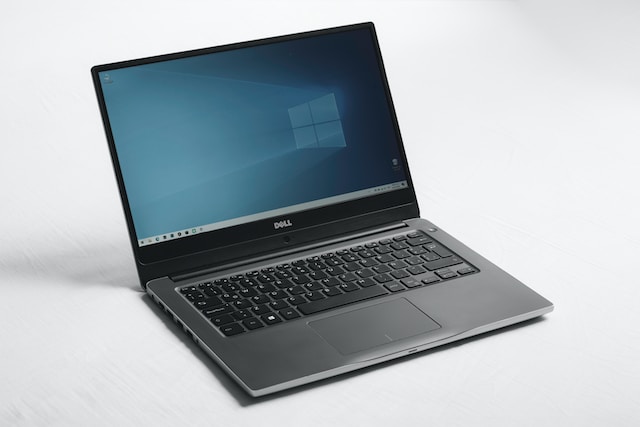How To Remove Hackers From Computer Windows 10: Expert Guide
Disclosure: Some of the links in this article may be affiliate links, which can provide compensation to me at no cost to you if you decide to purchase a paid plan. We review these products after doing a lot of research, we check all features and recommend the best products only.
In today’s world, where everything is online, the security of your computer from computer hackers is of utmost importance. Cybercriminals are always on the lookout for a vulnerable system that they can exploit. But how do you know if your computer has been compromised? Signs of unusual system behavior or unexpected changes to files and settings are telltale signs that your computer has been hacked.
In this blog, we will guide you through initial steps to take following the discovery of a hacking ,How To Remove Hackers From Computer Windows 10, changing security credentials post-hack, and steps for future prevention of hacks. We will also detail what to do if hacker removal fails and whether a hacked computer can be fully recovered. Stay with us as we help you secure your computer from cyber-attacks.
Signs Your Computer Has Been Compromised
Unusual system behavior, unexpected changes to files or settings, unexplained network activity, unauthorized account access or activity, and assessing the extent of the damage are all signs of strange behavior that your computer may exhibit if it has been compromised by hackers.
These indicators point towards a possible hack and should raise red flags for you. It’s crucial to stay vigilant and monitor your computer for any suspicious activity, including any strange behavior on the system. Remember to take caution while browsing the internet, using social media platforms, and downloading apps to minimize the risk of falling victim to similar attacks in the future.
Unusual System Behavior Signifying a Possible Hack
Unusual system behavior can be a strong indication of a possible hack. If you notice your computer crashing or freezing frequently, it could be a sign that someone has gained unauthorized access. Slow performance and frequent error messages are also red flags for a compromise.
Additionally, the appearance of unfamiliar programs or icons on your screen should not be taken lightly, as they could signal a hack. It’s important to stay vigilant and take immediate action if you suspect any unusual system behavior.
Unexpected Changes to Files or Settings
Unexpected changes to files or settings on your computer can be alarming and may indicate a potential hack. If you notice that your files are being modified, deleted, or encrypted without your knowledge, it’s important to take immediate action.
Similarly, changes to settings such as your homepage, wallpaper, or browser extensions should raise suspicion of unauthorized access. Keep an eye out for disappearing or renamed files and folders, as this could be a result of a compromise. Additionally, be cautious of new or unknown programs appearing in your startup list, as this could be a sign of a hacker’s presence.
Unwanted browser toolbars or search engine changes, including default search engine changes, should also be viewed as potential signs of a hack. Stay vigilant and take the necessary steps to protect your computer from the face of a compromised state.
Unexplained Network Activity
Unusual network traffic or high data usage could indicate unauthorized access to your computer. If you notice unknown devices appearing on your network, it could be a sign of a breach. Outgoing network connections to suspicious IP addresses may be a result of hacking attempts. Slow internet speed or frequent disconnections might suggest that your computer has been compromised.
Additionally, blocked access to certain websites or online services could indicate a hack. Stay cautious and take the necessary steps to ensure the safety of your computer and protect it from future attacks.
Unauthorized Account Access or Activity
Login attempts from unfamiliar locations or IP addresses can potentially indicate a hack, while unexpected password reset emails or notifications may signal a compromised account. Suspicious activity, such as unauthorized transactions or messages, could be a result of hacking, and changes to account settings or permissions without your knowledge are clear signs of unauthorized access.
If you find yourself unable to log in to your accounts or are locked out, it may suggest a hack has occurred. Additionally, if you notice login sessions from a different country, there’s a good chance that someone hacked you. Remember that this can affect any online service, including your email provider, bank, social networks, Microsoft Account, etc.
Initial Steps Following the Discovery of a Hack
Disconnecting from the network is crucial to prevent further damage when you discover a hack. Assessing the extent of the damage and taking appropriate actions is important. Contacting your bank and credit card companies to report any potential financial risks is necessary.
Changing passwords for all your online accounts is a necessary step after a hack. Updating and running antivirus software to scan for and remove any malware or viruses is also recommended.
Additionally, if your hack was the result of clicking on a suspicious email or attachment, it’s a good idea to warn others of the attack. Similar hacks tend to happen in waves, as multiple victims are contacted at a time. Keeping in mind these initial steps is essential to mitigating the impact of a hack and protecting your data.
Disconnecting from the Network
To protect your computer from further unauthorized access, start by unplugging the Ethernet cable or turning off Wi-Fi. It’s also important to disable Bluetooth and other wireless connections to prevent remote connections.
By disconnecting from the network, you minimize the risk of data theft or remote control by hackers. Additionally, turning off file sharing and remote desktop services can protect your computer from intruders. For an extra layer of security when connected to the internet, consider using a virtual private network (VPN).
Assessing the Extent of the Damage
Assessing the extent of the damage is crucial in dealing with a computer hack. Start by scanning your computer for malware and viruses to identify any infected files or programs. Check for unauthorized changes or modifications to files, folders, or system settings.
Review logs and system event records for suspicious activities or entries. Verify the integrity of backups to ensure they haven’t been compromised. And if needed, seek professional assistance or contact your IT department for a thorough assessment. Taking these steps can help you understand the full impact of the hack.
How to Remove Hackers from Computer Windows 10
Performing a thorough system scan with reliable antivirus software, such as a virus scan, is crucial in identifying and eliminating any malicious programs that hackers may have installed. It is also important to install security patches and updates for your operating system and applications to address any vulnerabilities that may have been exploited.
Changing all passwords, using strong and unique ones for each account, is essential to prevent further unauthorized access. Removing suspicious programs or applications identified during the scan, including any malware detected by the virus scan, can help eliminate potential backdoors. Restoring your computer to a previous clean state using system restore or a backup can effectively remove any malware installed by hackers.
Performing a Full System Scan
Running a thorough scan of your entire computer is a crucial step in removing hackers from your Windows 10 PC. By doing so, you can detect and eliminate any malicious files or programs that may have infiltrated your system.
It is important to use a reliable antivirus program for this task as it provides comprehensive protection against known threats. Additionally, scanning external storage devices like USB drives is essential to prevent the spread of malware.
Enabling real-time scanning ensures continuous monitoring and protection against new and emerging threats. Before initiating the scan, make sure to update your antivirus software to ensure it has the latest virus definitions and security features.
Initiating System Updates
Regularly updating your operating system is crucial for protecting your computer against hackers. By installing the latest software updates, you can patch security vulnerabilities and prevent malware attacks.
These updates often include security patches that address potential weaknesses in your computer’s defenses. To stay one step ahead of hackers, make sure to regularly check for software updates and install them as soon as they become available. By keeping your system up to date, you can protect your personal information from unauthorized access.
Increasing Browser Security
To enhance your browser’s security and ensure safe browsing, consider installing browser extensions or plugins that offer additional protection, such as blocking malicious websites and detecting phishing attempts.
Enabling pop-up blockers can prevent unwanted windows from opening and exposing your computer to malware. Regularly clearing your browser’s cache and cookies removes stored data that hackers could access. When downloading files, exercise caution and only download from trusted sources to ensure safe browsing.
Additionally, disable browser features like auto-fill and password saving to decrease the risk of hackers gaining access to your login credentials. It is important to note that Google also emphasizes the importance of browsing securely by ensuring that websites are secured with HTTPS. By checking for the lock sign or protected sign, you can verify if a site is safe to visit and practice safe browsing.
Changing Security Credentials Post Hack
After discovering a hack, changing your security credentials is crucial. Start by altering the passwords associated with compromised accounts, including your email address, to prevent unauthorized access.
It’s advisable to use strong, unique passwords for each online account, such as your email address, to minimize the impact of potential breaches. Consider employing a password manager to securely store and generate complex passwords. Additionally, enabling multi-factor authentication whenever possible adds an extra layer of security.
Regularly monitor your accounts, including your email address, for any suspicious activity and report it promptly to protect yourself from future attacks in the face of a compromised computer.
Modifying Passwords
When it comes to modifying passwords, there are a few key strategies you should keep in mind for enhanced security. Firstly, it’s important to create passwords that are at least 12 characters long and include a combination of upper and lowercase letters, numbers, and special characters. Avoid easily guessable information like birthdays, names, or common words.
Changing your passwords regularly is also crucial to reduce the risk of them being compromised. Additionally, consider using passphrases instead of passwords for added security. Finally, it’s essential not to reuse passwords across multiple accounts to prevent hackers from gaining access to multiple services with a single compromised password.
Enabling Firewall and Windows Defender
Enabling the built-in Windows Firewall allows you to monitor and control incoming and outgoing network traffic, enhancing your computer’s security. It is crucial to have an up-to-date antivirus program like Windows Defender or a similar reliable app to protect your PC from spyware and other malicious attacks.
Configure your firewall and antivirus settings to automatically scan for and remove any unknown files or malware. Regularly running full system scans is a good way to detect any potential threats and ensure the safety of your computer. Additionally, using a virtual private network (VPN) while browsing the internet adds an extra layer of protection against hackers.
Can A Hacked Computer Be Fully Recovered?
Recovering from a hack can be a complex and time-consuming process. It’s difficult to guarantee a complete restoration without residual effects. Data loss and damage may occur depending on the severity of the hack. Professional assistance may be required for full recovery and security. Implementing preventative measures minimizes future risk.
Repercussions of a Hack
A hack can result in unauthorized access to sensitive information, such as personal data or financial details. Hackers may exploit stolen information for identity theft, fraud, or other malicious purposes.
The reputation of individuals or businesses can be tarnished due to a hack. Financial losses can occur because of unauthorized transactions or system downtime. The emotional and psychological impact of a hack can be significant, leading to feelings of violation and insecurity.
Steps for Future Prevention of Hacks
To keep your computer safe from future attacks, the best way is to take the right steps. The second step is to regularly update your antivirus software and enable automatic updates to ensure that your system is protected against the latest threats.
Exercise caution when clicking on links or downloading attachments from unfamiliar sources, as these can be pathways for hackers to gain access to your PC. Use a reliable firewall to block unauthorized access and consider implementing strong passwords for your user accounts. Educate yourself about common hacking techniques and stay informed about the latest security threats to stay one step ahead of malicious hackers.
What To Do If Hacker Removal Fails?
If your attempts to remove the hacker from your computer fail, take immediate action. Disconnect from the internet to prevent further access, seek professional assistance, consider reinstalling the operating system, restore files from a clean backup, and strengthen security measures for future protection.
similar blogs:
How Long Does A Gaming Laptop Last: A Complete Guide
American Made Laptops: Top Picks For Quality And Patriotism
Conclusion
In conclusion, it is crucial to prioritize cybersecurity and take immediate action if you suspect your computer has been compromised. Signs of a possible hack include unusual system behavior, unexpected changes to files or settings, unexplained network activity, and unauthorized account access or activity.
Once you discover a hack, disconnect from the network and assess the extent of the damage. Remove the hacker from your Windows 10 PC by performing a full system scan, initiating system updates, and increasing browser security. Change your security credentials by modifying passwords, enabling the firewall, and using Windows Defender. While recovering from a hack may be challenging, taking preventative measures and staying vigilant can help protect your computer in the future.







